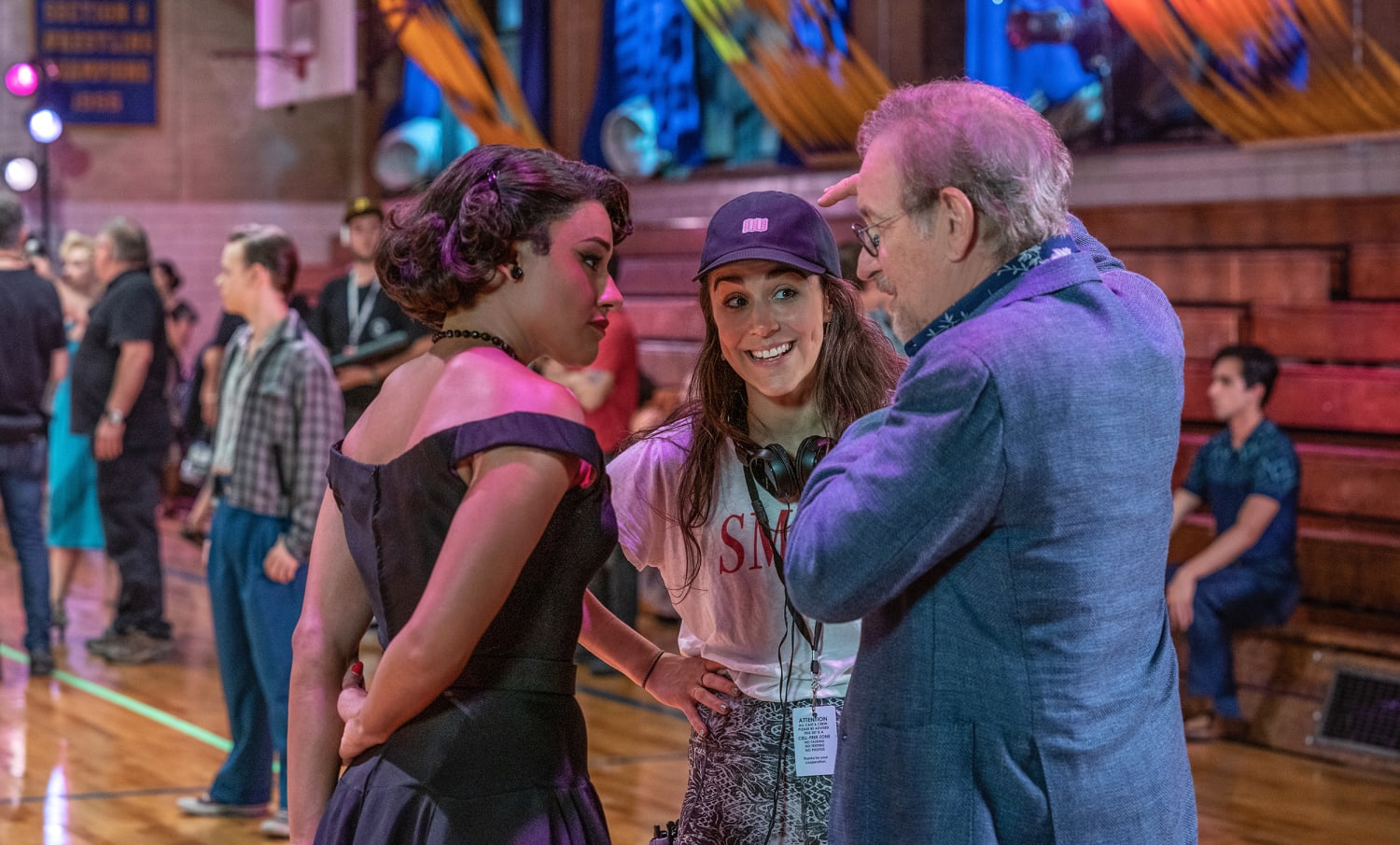When Patricia Lucía Delgado, the associate choreographer for the new movie version of “West Side Story,” was trying to get a group of Latino dancers playing members of the Sharks gang to move a certain way, she thought of the perfect imagery.
Delgado, 39, who’s Cuban American, instructed them to dance as though they were sliced ripe plantains, or maduritos, that had been thrown in an extremely hot frying pan.
“That was all I had to say,” said the former principal dancer for the Miami City Ballet, amused by the analogy’s effectiveness.
Delgado’s work on the Steven Spielberg remake is her latest collaboration with the movie’s renowned choreographer, Justin Peck, who’s been described as “the third important choreographer to have emerged in classical ballet this century” — and is also Delgado’s husband.
Delgado and Peck, whose mother is from Argentina, have worked together on several projects, including pieces Peck created for the Miami City Ballet, and a music video for the rock band The National. She has also staged Peck’s work on dancers around the world.
Born and raised in South Florida, Delgado studied at the Miami City Ballet School and also trained at New York City’s prestigious School of American Ballet and American Ballet Theatre. She became Miami City Ballet’s principal soloist in 2006 and principal dancer in 2007, renowned for her versatility in a company whose repertoire is known as one of the most diverse. During her time at MCB, Delgado performed everything from classical ballet to narrative, abstract and contemporary dance styles.
She left in 2017, moving to New York City that same year and becoming a freelance dancer, a répétiteur — who stages dances created by others — and most recently, a faculty member at The Juilliard School.
“I wanted to continue my artistic growth and I wanted to follow my heart to New York, which was always enticing but I didn’t feel ready for. And my now-husband lived here so I wanted to find balance in my life, not doing long-distance,” said Delgado, who has an 8-month-old daughter with Peck.
Delgado said her choreography with 60 dancers on the “West Side Story” set made her feel connected to her Latino heritage more than any other work in her 21-year career.
“Growing up in Miami, you’re surrounded by this community that’s like us and so I don’t think I tapped into it as much — I thought, ‘This is normal,’” Delgado said, speaking of her hometown, which is 70 percent Hispanic.
Delgado brought the Caribbean touch to the dancers playing Puerto Rican gang members. Contrary to the original 1961 movie — which Delgado said is a masterwork in its own right — she proudly pointed out they intentionally cast only Latino dancers to play the Sharks in this iteration of the film. Similarly, the rival gang — the Jets — were composed entirely of non-Latino white dancers.
This dynamic allowed her the unique opportunity to learn how culture informed the style and learning methods intrinsic to each group of dancers. Consequently, it also affected the way Delgado coached and choreographed, she said — hence the fried plantain analogy with the Sharks.
Delgado called herself a “defender of the dance” in the Hollywood film circle she recently entered, explaining that few people understand what it takes to incorporate high-caliber dance into a film or TV production.
Most filmmakers are unaware of the dancers’ needs and the demands of the creative and training processes leading up to the shoot.
Just as important, dance on film makes for a different performance than on a stage, Delgado said. “We have no front, we have no back, we have no wings. We were learning the steps in a globe.”
While Delgado points out they did not set out to re-do “West Side Story” but to create a new version, she also expresses great reverence for Jerome Robbins, the choreographer of the original Broadway production and film.
“It’s a whole new choreography, but you cannot do ‘West Side Story’ without feeling Robbins’ presence,” she said.
Working on the remake, Delgado said, bound her more tightly to her Caribbean heritage, and her presence and participation freed the film’s Latino dancers to explore and embody their culture through movement.
“What I think they took from it was a sense of belonging and a sense of place,” said Delgado, “and they are all wanting more.”
Follow NBC Latino on Facebook, Twitter and Instagram.
Source: | This article originally belongs to Nbcnews.com











